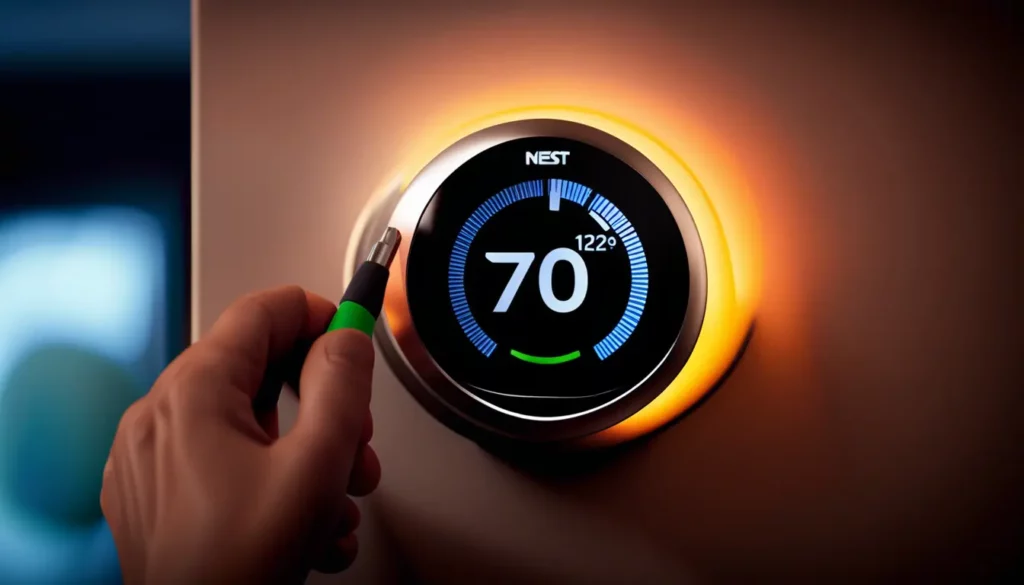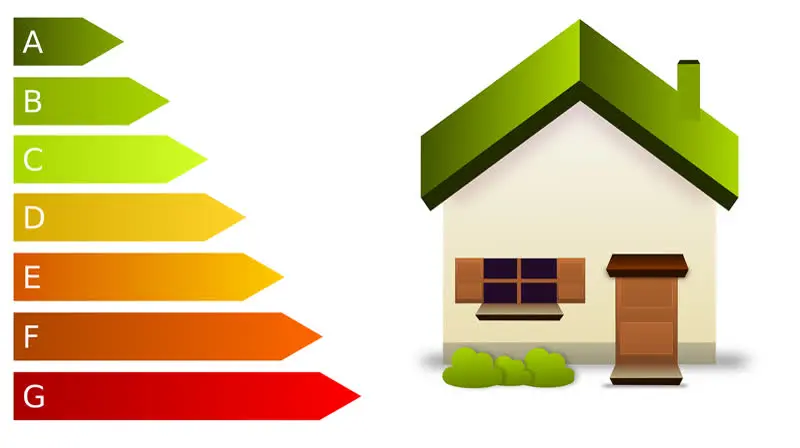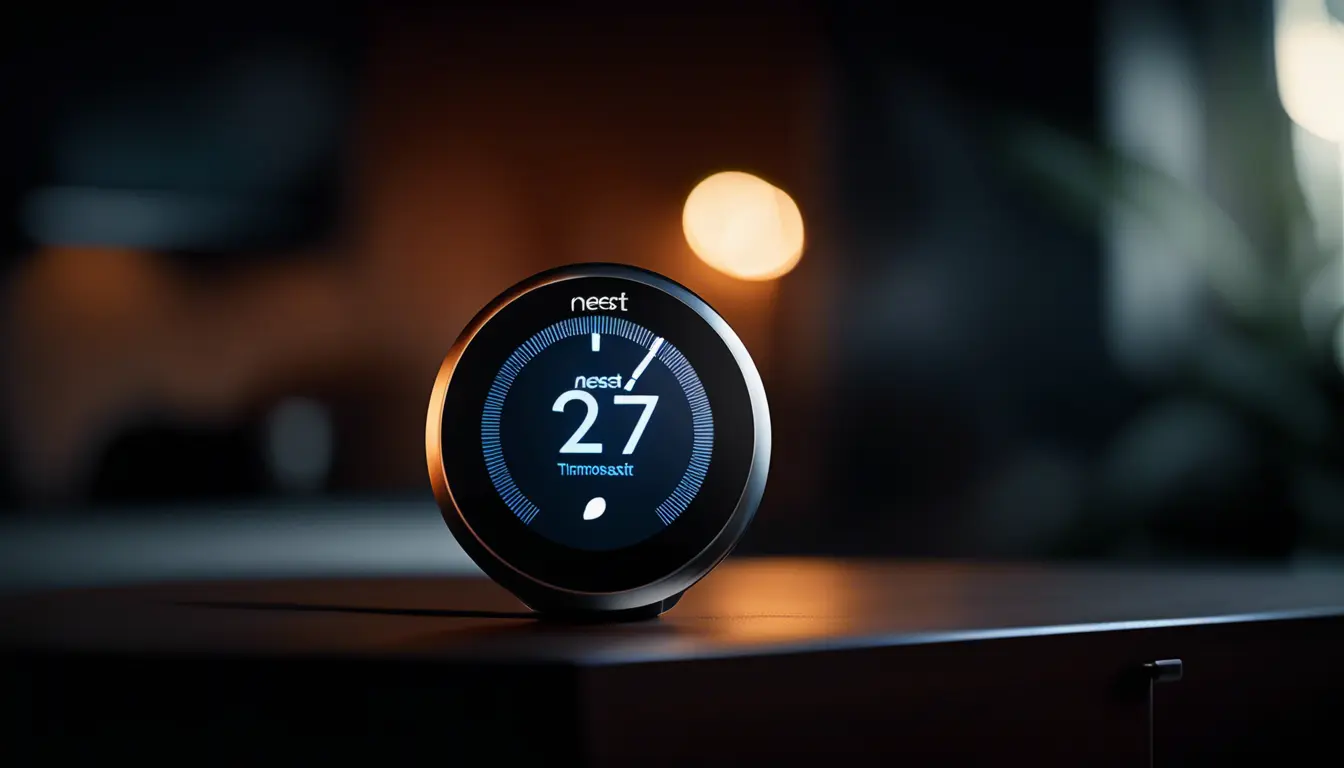Proper calibration of your Nest thermostat is crucial for achieving optimal performance and comfort in your home.
Without regular calibration, you may experience issues such as incorrect temperature readings, excessive cycling, or a mismatch between the actual ambient temperature and the temperature set on your thermostat.
Calibrating your Nest can also help it adapt to changes in your home’s environment and ensure that it accurately reflects your personal comfort needs.
This not only enhances the efficiency of your thermostat but also maintains a consistent and comfortable temperature in your home.
Understanding Nest Thermostat Calibration
To ensure that our readers have a thorough understanding of what calibration means for their thermostats, let’s dive into the specifics:
Explanation of what calibration means in relation to thermostats
- Defining Calibration: Calibration, in the context of thermostats, refers to the process of setting the thermostat’s internal sensors to correctly read the ambient temperature. It’s about ensuring the temperature displayed matches the actual temperature of the room.
- Purpose of Calibration: The primary goal is to maintain accuracy, which directly impacts your heating and cooling system’s efficiency. By calibrating your Nest, you’re instructing it on what the true temperature is in your home.
- Outcome of Calibration: Expect a more consistent and comfortable indoor climate and potentially lower energy costs due to more efficient heating and cooling patterns.
How the Nest Thermostat uses calibration to learn about your home’s heating and cooling patterns
- Learning Phase: Over time, the Nest Thermostat records and analyzes the heating and cooling patterns in your home. This ‘learning’ phase allows it to anticipate your preferences and adjust settings automatically.
- Adaptive Scheduling: By calibrating the Nest, you help it create a more accurate schedule that aligns with your life and adjusts to seasonal changes, which are essential for maximizing both comfort and efficiency.
- Usage Insights: The more accurately calibrated your thermostat is, the more precise your Energy History and Home Report will be, giving you better insights into your energy consumption patterns.
By meticulously calibrating your Nest Thermostat, you’re not only optimizing your home for your comfort but also for energy efficiency. A well-calibrated Nest is more than a gadget; it’s a smart home partner that grows more attuned to your preferences and contributes to a sustainable lifestyle.

Comprehensive Guide to Calibrate Your Nest Thermostat
Ensuring your Nest Thermostat provides accurate and consistent temperature control requires careful calibration. To aid you in this process, we’ve combined and refined our steps into one comprehensive, easy-to-follow guide that will elevate your home’s comfort level with precision.
Preliminary Steps for Effective Calibration
Begin by affirming your sensor placements:
- Find the Right Location: Install your sensors away from elements that distort temperature readings, such as sunlight, drafts, and heat sources.
- Correct Installation Height: Aim for about 5 feet off the ground to best capture your living space’s ambient temperature.
- Choose an Interior Wall: Opt for a wall in a frequently used room to ensure your thermostat reflects the temperature where it matters most to you.
Step-by-Step Nest Calibration Instructions
With your sensors suitably positioned, let’s begin the thorough calibration process:
- Launch the Nest App: Connect your smartphone to Wi-Fi and open the Nest app. Select the thermostat in question from your list of devices.
- Navigate to Settings: Tap the gear icon for ‘Settings’ and scroll to ‘Calibration’. Here’s where your precise calibration journey starts.
- Initiate Calibration Sequence: Follow the app’s on-screen instructions diligently to begin calibration. This is a critical phase for achieving accurate results.
- Adjust to Desired Temperature: When prompted, set your preferred temperature carefully, as this setting will be your standard for comfort.
- Confirm and Allow Processing: After confirming your desired settings, give the Nest a moment to adapt. This stage is about patience and precision.
- Finalizing Calibration:
- Verify With External Thermometer: Compare your Nest’s readings to an independent thermometer’s to identify any discrepancies.
- Manual Tweaking: Adjust the temperature within the app if differences are found—make only slight changes to avoid overcorrection.
- Wait and Observe: Allow the adjustments to settle, as it can take some time for the thermostat to align with changes.
- Monitor and Test: After calibration, attentively monitor and test the thermostat over several days to confirm consistent accuracy.
Pro-Tips for Ensuring Nest Calibration Excellence
- Seasonal Check-Ups: Recognize that your home’s temperature needs will shift with the seasons, necessitating regular calibration checks.
- Routine Comparisons: Regularly compare your thermostat’s results against a secondary thermometer, especially after drastic climate variations.
- Expert Assistance: If persisting inaccuracies arise or if the calibration process proves problematic, promptly consult with a professional HVAC service provider.
Through this detailed guide, you will optimize your thermostat’s operational efficiency, ensuring that your home remains a haven of comfort tailored exactly to your preferences. It’s not just about adjustments; it’s about crafting the perfect ambiance for your day-to-day life.
Signs That Your Nest Thermostat Needs Calibration
Identifying when your Nest Thermostat requires recalibration is essential for maintaining optimal home comfort and energy efficiency. Pay attention to the following signs that may indicate your thermostat needs a tune-up:
- Irregular Temperature Readings: If you notice that the temperature displayed on your Nest doesn’t match the actual feel of your home, it may be time to recalibrate.
- Inconsistent Comfort Settings: When your preferred settings no longer deliver the comfort you’ve come to expect, or you observe a spike in your energy bill without a clear cause, your Nest’s calibration could be off.
- Heating/Cooling System Overactivity: Excessive running of your HVAC system, even when your home seems to have reached the desired temperature, suggests that your thermostat may need recalibration to accurately gauge your home’s temperature.
By staying vigilant to these signs, you can promptly address any calibration issues with your Nest Thermostat, ensuring it continues to serve as a reliable and efficient component of your smart home system.

Nest Calibration Through Learning Mode
The Nest Thermostat’s learning mode stands at the forefront of intelligent home temperature regulation by observing and adapting to your daily routines.
By leveraging advanced algorithms, the learning mode intuitively adjusts to your preferred comfort levels, simplifying your life and reducing energy usage without you lifting a finger.
Here’s how you can enable your Nest Thermostat to become a true reflection of your temperature preferences through its innovative learning mode:
learning mode
- Understanding Learning Mode: The Nest Thermostat boasts an ingenious feature designed to learn from your habits. It takes note of the times you adjust the temperature and begins to anticipate your needs, creating a personalized schedule based on your activity patterns.
- Activating Learning Mode: To initiate this smart feature, ensure your Nest Thermostat is properly installed and connected to the Nest app. Navigate to the ‘Schedule’ option and switch to ‘Learning’ instead of a fixed schedule. This primes your thermostat to begin its learning journey.
- Live Your Life: The beauty of learning mode is in its hands-off approach. As you go about your days and weeks, simply adjust the thermostat whenever you feel the need. Each interaction is a data point for Nest, informing its automatic schedule refinements.
- Let Nest Learn: With every tweak and adjustment, your Nest Thermostat becomes smarter, gradually reducing manual interactions. Over time, it learns the exact temperatures you prefer during different times and days, creating a unique heating and cooling cadence.
- Monitor and Adjust: While the Nest Thermostat autonomously adjusts, it’s wise to monitor the changes through the Nest app. If an automatic adjustment doesn’t suit your comfort, make a manual change, and the thermostat will factor this into its learning.
- Refined Comfort: As days become weeks, you’ll notice the need for fewer manual adjustments. Your Nest Thermostat will have learned your preferences, ensuring your home’s climate is always just as you like it, optimized for both comfort and energy efficiency.
By engaging the learning mode feature, you can enjoy a living space that caters to your unique comfort preferences, reflecting the exceptional capabilities of your Nest Thermostat. It’s not merely a device; it’s a lifestyle assistant, dedicated to enhancing your homemaking journey through seamless, personalized temperature control.
Common Challenges When Calibrating a Nest Thermostat
Calibrating your Nest Thermostat can sometimes present obstacles that may affect its performance. Some of the prevalent challenges include:
- Wi-Fi Connectivity Issues: A stable Wi-Fi connection is crucial for the Nest Thermostat’s features to function correctly. Calibration can be impacted by intermittent or weak signals, leading to challenges in communication with your smart devices and app.
- HVAC System Compatibility: Your Nest Thermostat must be compatible with your existing HVAC system to function optimally. Incompatibilities can result in inaccurate temperature control and hinder the calibration process.
- Sensor Discrepancies: The thermostat relies on sensors to determine the ambient temperature. If these sensors are faulty or obstructed, they can provide incorrect data, necessitating re-calibration.
- Software Glitches: Occasionally, software updates or glitches can affect how your thermostat operates. These need to be diagnosed and resolved to ensure precise calibration.
Understanding these challenges is the first step in ensuring your Nest Thermostat operates as intended, providing the comfort and efficiency you desire. How to Fix Nest Thermostat Delayed Message
Troubleshoot Like a Pro: Your Nest Thermostat Solutions
If you encounter problems during the calibration of your Nest Thermostat, these troubleshooting tips can help you get back on track:
- Resolving Wi-Fi Connectivity Issues:
- Check your router’s signals and reboot it if necessary to improve the connection.
- Move your thermostat closer to the router or use a Wi-Fi extender to enhance signal strength.
- Ensure your Wi-Fi network is not overloaded with devices, which could impact connectivity.
- Addressing HVAC System Compatibility:
- Verify that your Nest Thermostat model is designed to work with your particular HVAC system.
- Cross-reference Nest’s compatibility guidelines and consult with an HVAC professional if needed.
- Rectifying Sensor Discrepancies:
- Ensure there is no furniture or decor blocking the thermostat sensors.
- Check for dust accumulation on the sensors and clean them gently without damaging the components.
- Correcting Software Glitches:
- Ensure your Nest Thermostat is running on the latest firmware version.
- Perform a soft reset if the thermostat is unresponsive or acting irregularly.
Conclusion
In concluding our comprehensive exploration of the Nest Thermostat’s calibration process, it is evident that a properly calibrated thermostat is pivotal to maximizing home comfort, energy efficiency, and ultimately, user satisfaction. We’ve discussed the significance of the thermostat’s learning mode, which personalizes your home environment by adapting to your unique preferences and schedule. Additionally, we’ve highlighted common challenges such as Wi-Fi connectivity, HVAC system compatibility, sensor discrepancies, and software glitches—all of which can influence the calibration accuracy.
We’ve provided user-centric, actionable advice tailored to help you resolve these issues effectively. Whether it involves troubleshooting Wi-Fi problems, ensuring compatibility with HVAC systems, rectifying sensor issues, or addressing software hiccups, our step-by-step guide aims to empower you with the knowledge to enhance your Nest Thermostat’s performance.
- DIY Secrets: Finding and Using the Bosch Ice Maker Reset Button
- Chest Freezer vs. Upright Freezer: Which Should You Buy?
- Say Goodbye to Stubborn Stains on Stainless Steel Pots
- Transform Your Morning Brew: Expert Tips for Better Coffee
- Effortlessly Remove Mold From Tile Grout with These Easy Steps

I’m J.S., I created and am the content manager at DIYHouseSkills.com. I do the research and write the articles that appear on this website. I’ve learned many household skills during my life and think it’s important to at least know the basics so that you can save yourself time and money… READ FULL BIO >

